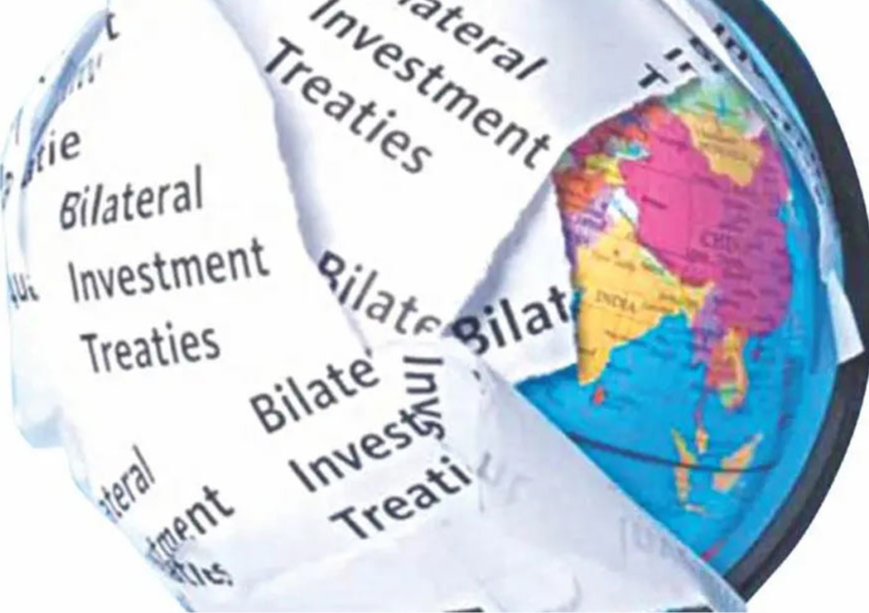Chasing new horizons: Sunset clauses in India’s revamped BIT regime
Chasing new horizons: Sunset clauses in India's revamped BIT regime Observer Research Foundation


Chasing New Horizons: Sunset Clauses in India’s Revamped BIT Regime

Evolution of India’s Investment Treaty Regime and the Present Stalemate
As India seeks to renegotiate its terminated Bilateral Investment Treaties (BITs) with states such as Argentina and Russia and foster new International Investment Agreements (IIAs) with key European economies, the United Kingdom (UK) and the United States (US), it must learn from its experience of challenging the 37 Investor-State Dispute Settlement (ISDS) notices of dispute raised by various investors and clearly articulate its vision of the ‘sunset’ implications of future BITs/IIAs. India must be wary of getting caught amid unfavorable international arbitration regimes and the sunset clauses of the subsisting and terminated BITs and IIAs as it further revamps its approach towards these treaties.
Grey Areas of the Sunset Clauses
Sunset clauses typically provide for the lapse of a treaty after a mentioned period but stipulate an artificial extension of the legal essence of the treaty beyond that time. The sunset period generally spans 5-20 years across common IIAs. However, contemporary trends reveal a tendency towards shorter durations, exemplified by the Indian Model-BIT specifying a 5-year sunset period. Indian Model-BIT defines the sunset clause as “In respect of investments made prior to the date when the termination of this Treaty becomes effective, the provisions of this Treaty shall remain in force for five years.”
India’s Tussle with ISDS
Affluent corporations leverage their financial prowess to navigate costly arbitration proceedings under the ISDS mechanism, often burdening the finances and policies of host states. India is concerned that the commonly accepted investor-state arbitration within ISDS mechanisms favors investors over the host state’s regulations. India has received over 24 notices for claims since 2017 during the sunset period. Out of these, eight have proceeded to investor-state arbitration. With India’s conservative position concerning investor-state arbitration, as evident from its non-ratification of the International Centre for Settlement of Investment Disputes (ICSID) Convention that facilitates the ISDS process, India aims to settle claims following the example of Nissan v. India, where the Japanese automaker withdrew its arbitration following a settlement with Tamil Nadu.
The Global Resonance of India’s Cautious IIA Approach
India’s deliberate caution regarding BITs/IIAs over the past five years starkly contrasts with its previous policy when it signed several BITs between 1994 and 2011. Several countries have emulated India’s stand. Indonesia and South Africa unilaterally terminated numerous BITs, many of which contained sunset clauses, with the latter even enacting domestic legislation to govern potential expropriation claims. In 2020, EU member states terminated approximately 130 intra-EU BITs.
The Way Forward
While they are valuable in policies where adaptability is essential, enabling periodic treaty reassessment and alignment with evolving host-state policies, the absence of explicit sunset provisions or ISDS mechanisms in recent FTAs demand finding a middle ground to navigate a favorable ISDS system and further fructify a shorter survival period. India must negotiate new BITs soon if it is keen to omit the 15-year sunset period stipulated in most of its terminated BITs. There are precedents where states such as Indonesia terminated BITs together with the survival effect of sunset clauses. India can reach a mutual understanding with states to forego the rest of the sunset period, thereby reducing the risk of new claims after facing sunset period claims in the past five years. Such clarity is necessary for India’s FDI ambitions, strengthening bilateral relations, and gradually uplifting India’s position to a favorable pedestal in the murky waters of investment treaty law.
SDGs, Targets, and Indicators Analysis
1. Which SDGs are addressed or connected to the issues highlighted in the article?
- SDG 8: Decent Work and Economic Growth
- SDG 16: Peace, Justice, and Strong Institutions
- SDG 17: Partnerships for the Goals
The article discusses issues related to investment treaties, investor-state dispute settlement (ISDS), and the need for India to renegotiate its terminated Bilateral Investment Treaties (BITs) and foster new International Investment Agreements (IIAs). These issues are connected to SDG 8, which aims to promote sustained, inclusive, and sustainable economic growth, full and productive employment, and decent work for all. They are also connected to SDG 16, which focuses on promoting peaceful and inclusive societies for sustainable development, providing access to justice for all, and building effective, accountable, and inclusive institutions at all levels. Additionally, the article highlights the importance of partnerships and negotiations in addressing these issues, aligning with SDG 17.
2. What specific targets under those SDGs can be identified based on the article’s content?
- Target 8.1: Sustain per capita economic growth in accordance with national circumstances and, in particular, at least 7% gross domestic product growth per annum in the least developed countries.
- Target 16.3: Promote the rule of law at the national and international levels and ensure equal access to justice for all.
- Target 17.17: Encourage and promote effective public, public-private, and civil society partnerships, building on the experience and resourcing strategies of partnerships.
The article’s content relates to Target 8.1 as it discusses the need for sustained economic growth and the impact of investment treaties on economic development. It also relates to Target 16.3 as it highlights the importance of access to justice and the role of ISDS mechanisms in investor-state disputes. Furthermore, the article emphasizes the need for partnerships and negotiations, aligning with Target 17.17.
3. Are there any indicators mentioned or implied in the article that can be used to measure progress towards the identified targets?
- Indicator 8.1.1: Annual growth rate of real GDP per capita
- Indicator 16.3.1: Proportion of population who have experienced a dispute in the past 2 years and who accessed a formal or informal dispute resolution mechanism, by type of mechanism
- Indicator 17.17.1: Amount of United States dollars committed to public-private and civil society partnerships
The article does not explicitly mention these indicators, but they can be used to measure progress towards the identified targets. Indicator 8.1.1 can measure the economic growth rate, Indicator 16.3.1 can measure access to justice and dispute resolution mechanisms, and Indicator 17.17.1 can measure the financial commitment to partnerships.
Table: SDGs, Targets, and Indicators
| SDGs | Targets | Indicators |
|---|---|---|
| SDG 8: Decent Work and Economic Growth | Target 8.1: Sustain per capita economic growth in accordance with national circumstances and, in particular, at least 7% gross domestic product growth per annum in the least developed countries. | Indicator 8.1.1: Annual growth rate of real GDP per capita |
| SDG 16: Peace, Justice, and Strong Institutions | Target 16.3: Promote the rule of law at the national and international levels and ensure equal access to justice for all. | Indicator 16.3.1: Proportion of population who have experienced a dispute in the past 2 years and who accessed a formal or informal dispute resolution mechanism, by type of mechanism |
| Target 17.17: Encourage and promote effective public, public-private, and civil society partnerships, building on the experience and resourcing strategies of partnerships. | Indicator 17.17.1: Amount of United States dollars committed to public-private and civil society partnerships |
Behold! This splendid article springs forth from the wellspring of knowledge, shaped by a wondrous proprietary AI technology that delved into a vast ocean of data, illuminating the path towards the Sustainable Development Goals. Remember that all rights are reserved by SDG Investors LLC, empowering us to champion progress together.
Source: orfonline.org

Join us, as fellow seekers of change, on a transformative journey at https://sdgtalks.ai/welcome, where you can become a member and actively contribute to shaping a brighter future.







